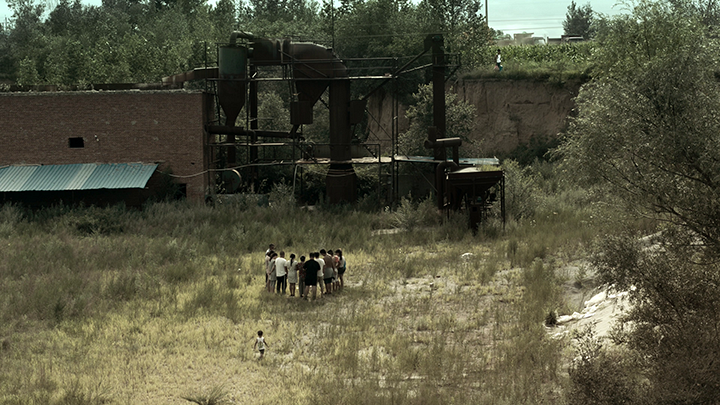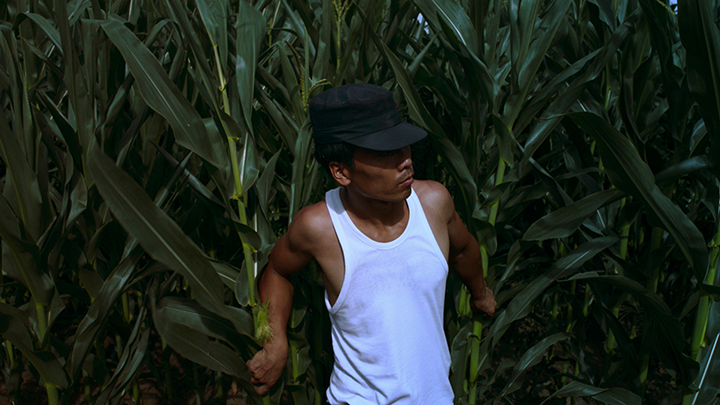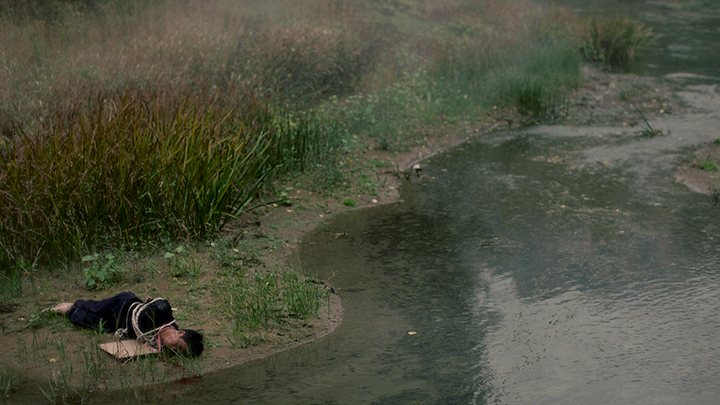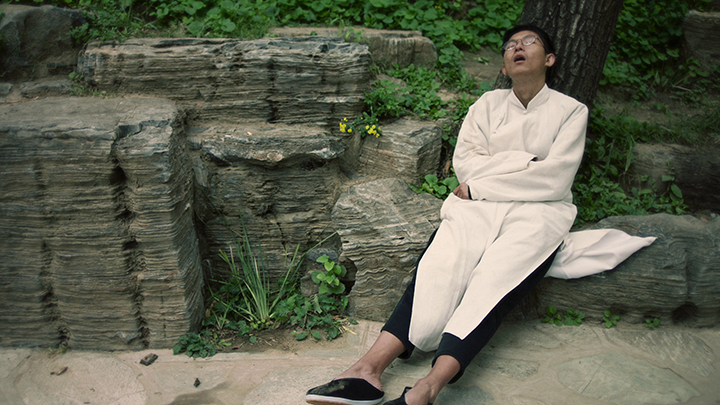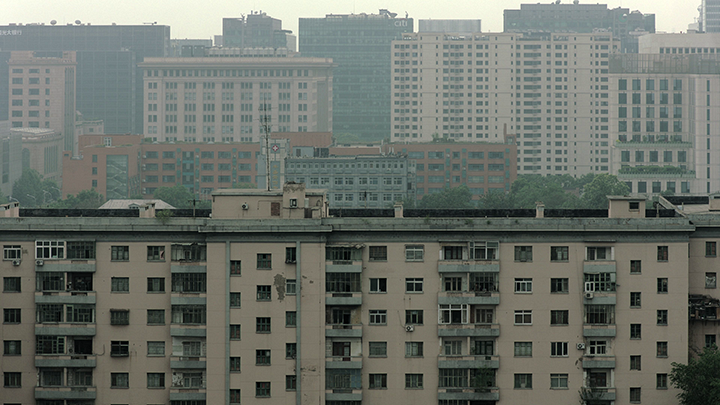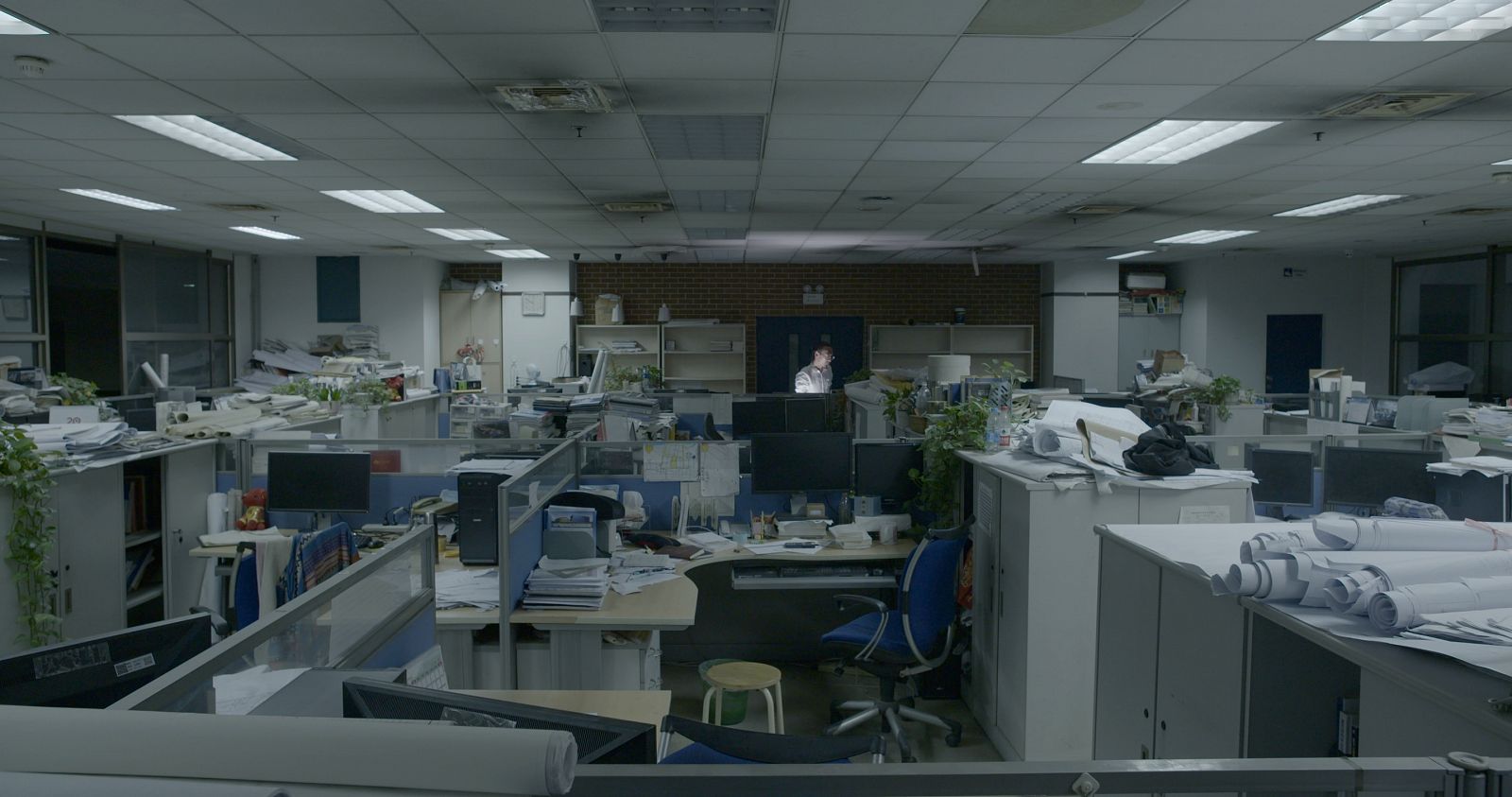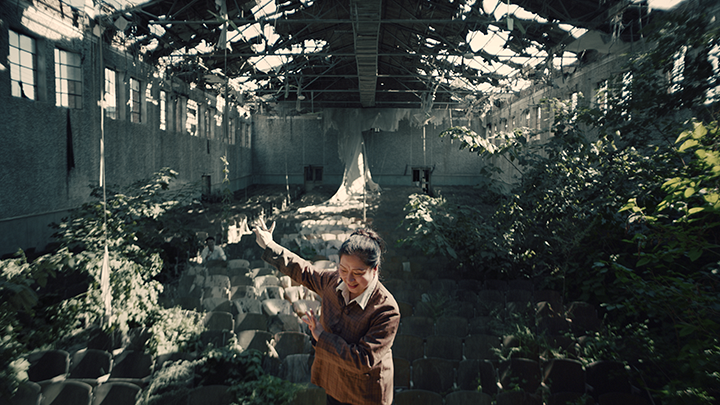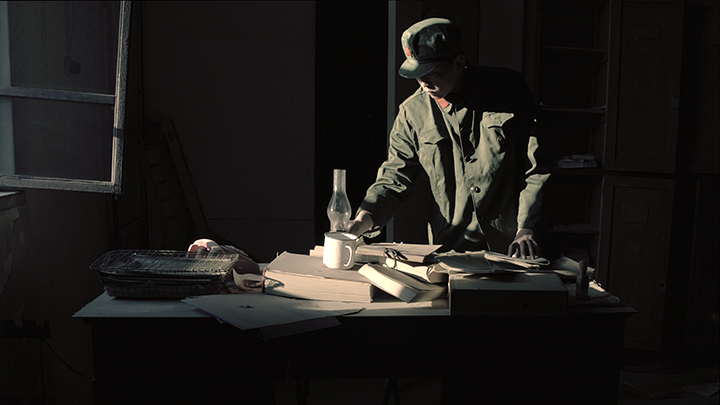In an era when China exerts increasing influence worldwide, I’ve been curious to learn more about how its citizens view their country’s dynamic and turbulent history. Broad generalizations about China as a whole in Western media coverage often fail to capture nuanced perspectives. While overtly political artists tend to make headlines, I find myself drawn to more contemplative works. And as someone who identifies as being part of the Chinese diaspora, I’ve found that disentangling cultural identity from political leanings can be particularly knotty. Perhaps this is where art can best serve us: to help express what feels ineffable.
Standing at the Crossroad at White Space Beijing is Wang Tuo’s second solo exhibition with the gallery. Looking back at China’s modern history, Wang raises questions about the journey it took for the country to arrive at this moment. The video installations are the culmination of two years of work by the Beijing-based multimedia artist. A digital gallery replicates the original floor plan of the physical space. With a combined runtime of just under 120 minutes, the five films can be enjoyed in one sitting or broken up into multiple viewings.
The intimate yet mediated experience suits Wang’s enigmatic work, which consists of layered narratives that blend history and memory. Gesturing to the historical roots of modern-day China, the title of the exhibition derives its name from a 1925 publication in which writer Lu Xun sought to address young people about the future amid a period of political upheaval. A century later, Wang captures the contradictions and disparities between what was promised and the social and political realities of China today. He describes his practice as a “historical conception of how I can see the links between different [moments in] time and space, where we are right now [and] where we are heading.” 1Wang Tuo, in conversation with the author, July 2020.
Born and raised in Changchun, Wang draws from his ethnic identity, as a Manchu in a predominantly Han society, as well as from field research on local shaman activities, in Smoke and Fire (2018) and Distorting Words (2019), the first two chapters of a tetralogy-in-progress about the artist’s hometown in northeast China. These films present a fictionalized retelling of “Zhang Koukou’s revenge,” a real-life triple homicide that made headlines around the world in 2018 when a man was sentenced to death for avenging his mother’s death more than two decades after her murder. Smoke and Fire intercuts between converging timelines: a migrant worker who returns to his village, and a boy who encounters a group of adults standing over a woman’s lifeless body. As the migrant worker carries out his attack on the men responsible for his mother’s death, the video cuts back to the boy trying to wake his dead mother. Wang demonstrates his skill as an evocative visual storyteller in the ending shots of a now motherless child, his face illuminated by fireworks, mirrored by a man lighting Roman candles and celebrating his successfully executed act of revenge.
The past returns again and again, both figuratively and literally in the form of folk tales and ghost stories. In Distorting Words, three channels of video contribute to the disjointed narratives, which further emphasize the feeling of chaos and fragmentation in society at large. A Qing dynasty allegory by the writer Pu Songling is told through voiceover, recounting the tale of a suicidal man who witnesses a woman hanging herself night after night. “The death wish of the young scholar made him witness another death repeatedly,” Wang explains. Echoes of bygone days reverberate through the figure of a scholar dressed in white as he wanders among lush vegetation, falling asleep under a tree. The character is based on Guo Qinguang, the only casualty of the anti-imperialist May Fourth Movement in 1919.2The official version is that Guo Qinguang died from a violent beating by the guards defending Cao Rulin’s mansion during the May 4th Movement. Other narratives insist that Guo Qinguang died from tuberculosis. For the artist, the second version is more convincing, and the absurdity of the whole story is that Guo's death was exploited and then reshaped as one of a martyr's. Wang Tuo adopted this absurd version into Distorting Words, in which the young student coughs up blood as he prepares to hang himself. Yet, even without the historical context, we can still sense a futile and wasted death in the artist’s video piece. The juxtaposition of two historically distanced events, Guo’s death with Zhang Koukou’s execution one hundred years later in 2018, alludes to history’s cyclical nature and highlights the individual’s struggle against a cruel and bewildering reality.
The revolutionary past, or the remnants thereof, are preserved in physical spaces via Wang’s work. “There is such power in a symbol: it can often create a critical point that is extremely close to the truth,” says the unseen narrator in Obsessions (2019), a companion to Spiral (2018), both of which feature a character who’s an architect. Through discussions of aesthetics and design principles, he contemplates his sense of self. Over a shot of high-rises and skyscrapers against the backdrop of smog-filled sky, he compares himself to a building, “like one of Le Corbusier’s vertical cities.” On the ground, the camera winds its way through dimly lit hallways of the Beijing Fusuijing Building. Constructed in the late 1950s, the residential structure once stood as an embodiment of China’s new Communist era. But as the video reveals, the building now appears deserted and rundown. We don’t see any people, but traces of their habitation linger, such as a kitchen consisting of an old refrigerator with pots and pans hanging on the wall. Navigating the labyrinthian interior becomes an exploration of the speaker’s psyche. Approaching the deepest part, the subconscious, we traverse a shadowy hallway lit by candles, until we reach a set of locked doors, the handles chained shut. The camera lingers before the screen fades to black.
The relationship between inaccessible archives and historical memory preoccupies the artist’s larger project. Symptomatic Silence of Complicit Forgetting (2019) goes even deeper to examine individual and collective memories that have been repressed. Troubled by his past, an aging writer wanders through the different rooms of his house. At his desk, he types on his laptop. A flashback shows a Red Guard stumbling across a deserted library, where he begins reading one of the books. He becomes engrossed in a short story told through voiceover about a scholar who hangs himself out of guilt, many years after his mother’s death. In a mesmerizing vision, the writer watches as a woman performs on the stage of an abandoned theater overgrown with vegetation. Later through a series of black and white stills, we see the same Red Guard beating a woman while traditional Chinese opera plays. Here, the separate threads eventually reveal themselves to be part of the same narrative: a writer struggling to confront the violence he inflicted on his own mother. The older man deletes the words on the screen, then the file itself, which is labeled “Amnesia,” in a deliberate act of forgetting. The erasure of history, whether personal or political, can also be observed in the beautifully composed shot of the youth who, with tears streaming down his cheeks, burns pages of a book. Wang seems to avoid prescribing how an individual or society should deal with trauma. But the film’s sense of grieving suggests that if we don’t confront our past, we will continue to be haunted by it.
On the other side of the world, my country has been struggling to acknowledge its own dark truths, from America’s enslavement of Black people and genocide of Indigenous populations to the systemic racism that pervades our institutions to this day. Holed up in New York City, I found myself watching and rewatching Wang’s films, trying to unpack the recurring sense of disconnect. That’s the problem with confronting something thought to have been long buried: it becomes difficult to break the cycle and move on. Wang is preoccupied with how his generation can “rethink and reflect [on] the legacy of [the] Cultural Revolution,” as well as other turning points in China’s history including the May Fourth Movement. He seems to wonder how these legacies of nationalism might fit together and what they portend for contemporary society. Like Lu Xun, the artist directs his call to action to those with most at stake in the nation’s future, though his work refrains from putting forward restorative measures or alternative visions. Perhaps more introspection is needed. In the spirit of providing a record, the exhibition’s end date slated for the year 2090 signals that the gallery intends to keep it online permanently. Whether we as a society will be around long enough for that day to come remains to be seen. The past may be irretrievable, but Standing at the Crossroad offers an opportunity to not forget, to remember and reimagine what could be.
Mimi Wong writes about art, culture, and literature. Her work has appeared in ArtAsiaPacific, The Believer, Catapult, Electric Literature, Hyperallergic, Literary Hub, and Refinery29. Her fiction has been published in Crab Orchard Review, Day One, and Wildness. For her writing on contemporary art, she was awarded an Arts Writers Grant by Creative Capital and the Andy Warhol Foundation. She is Editor-in-Chief of the literary magazine The Offing and a part-time lecturer at The New School. She lives in Brooklyn, New York.
